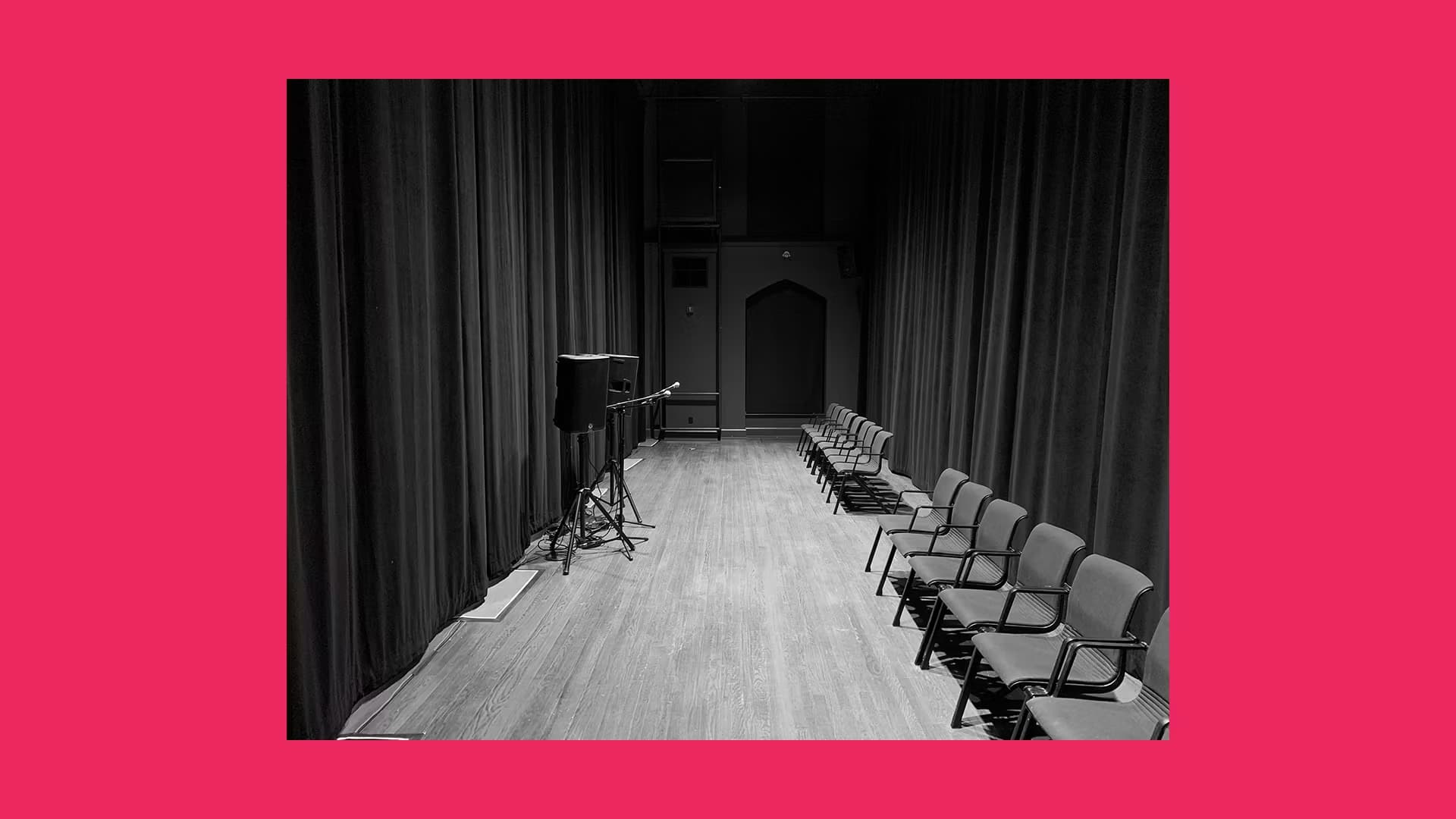
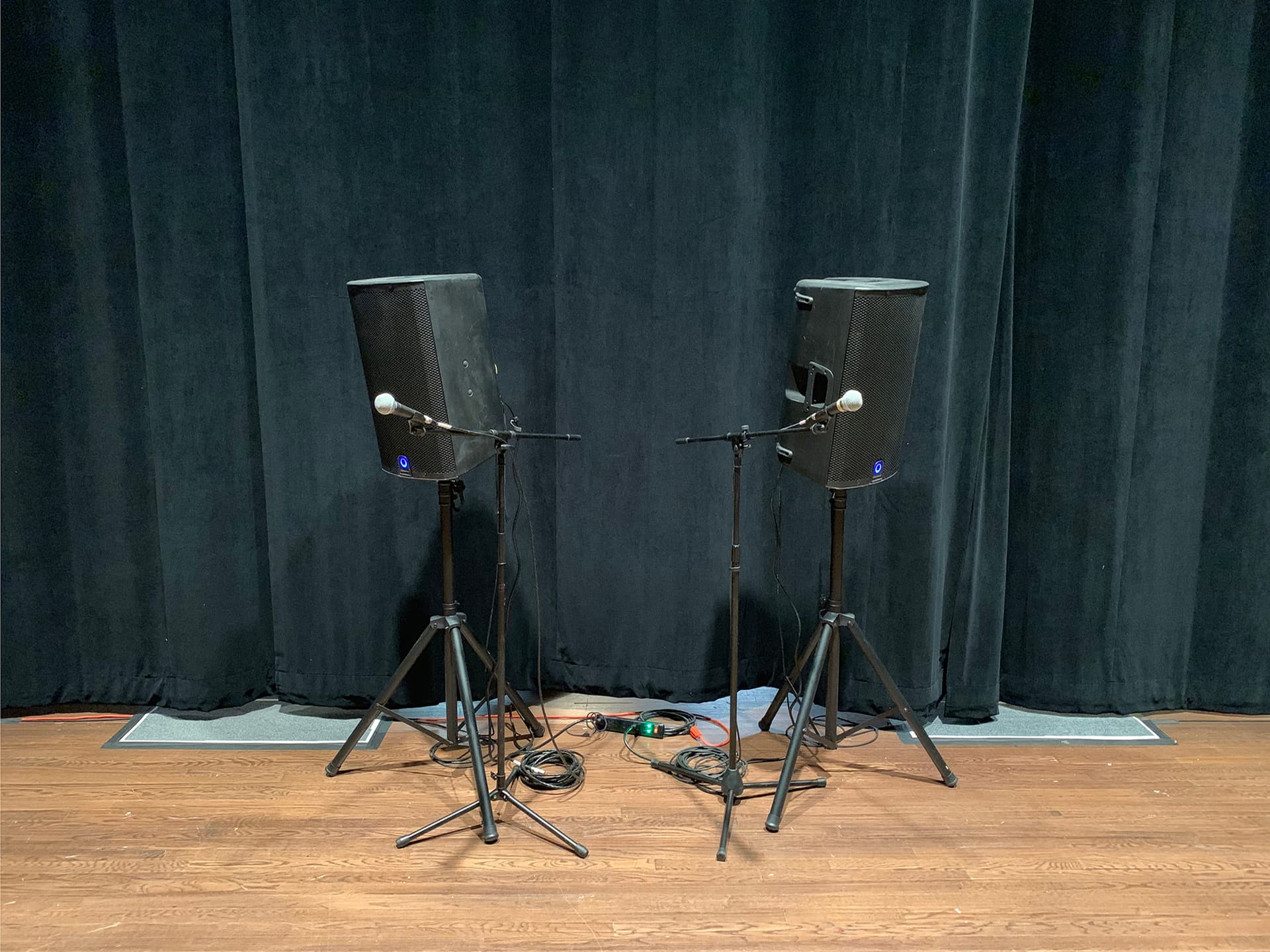
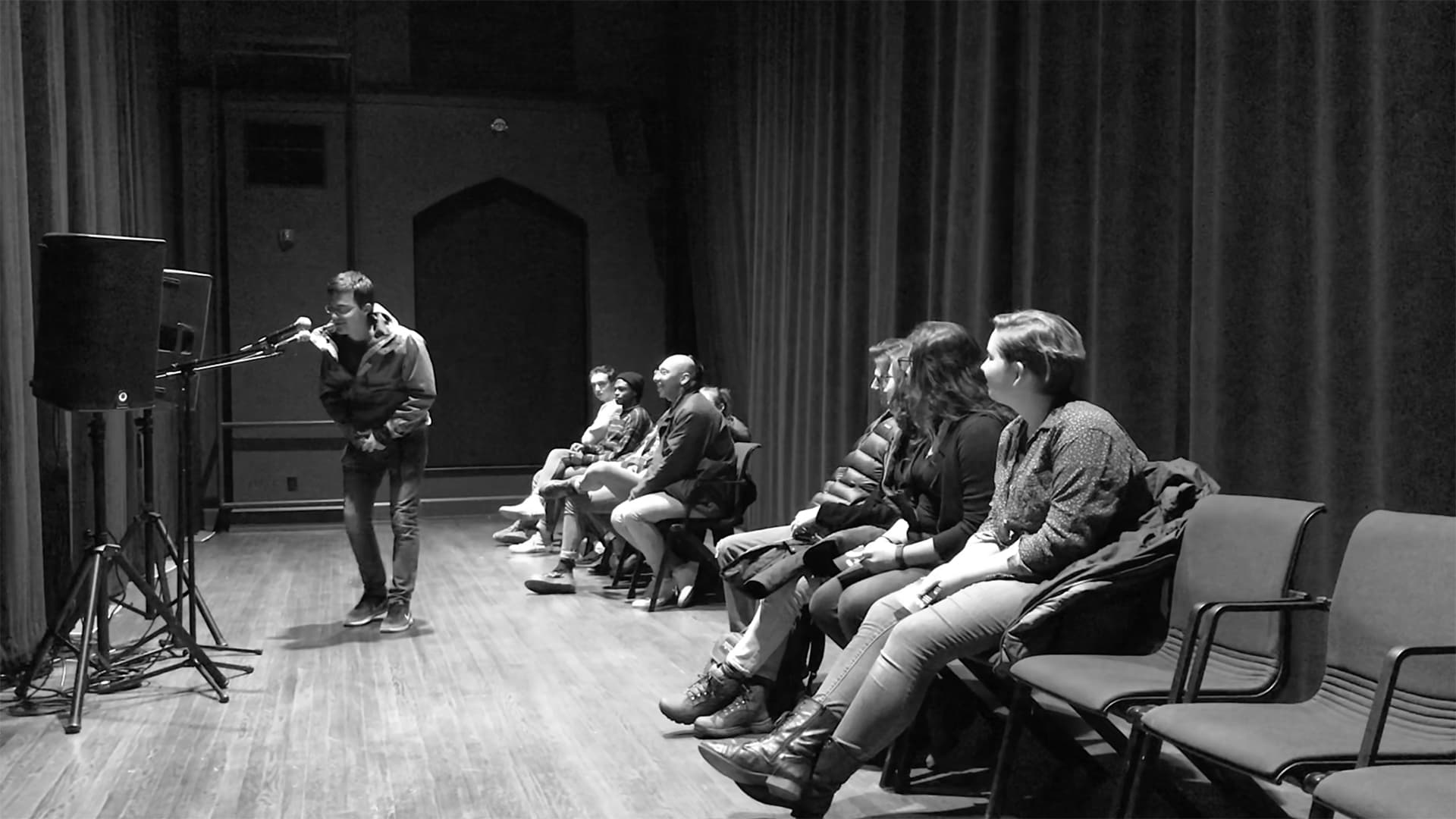
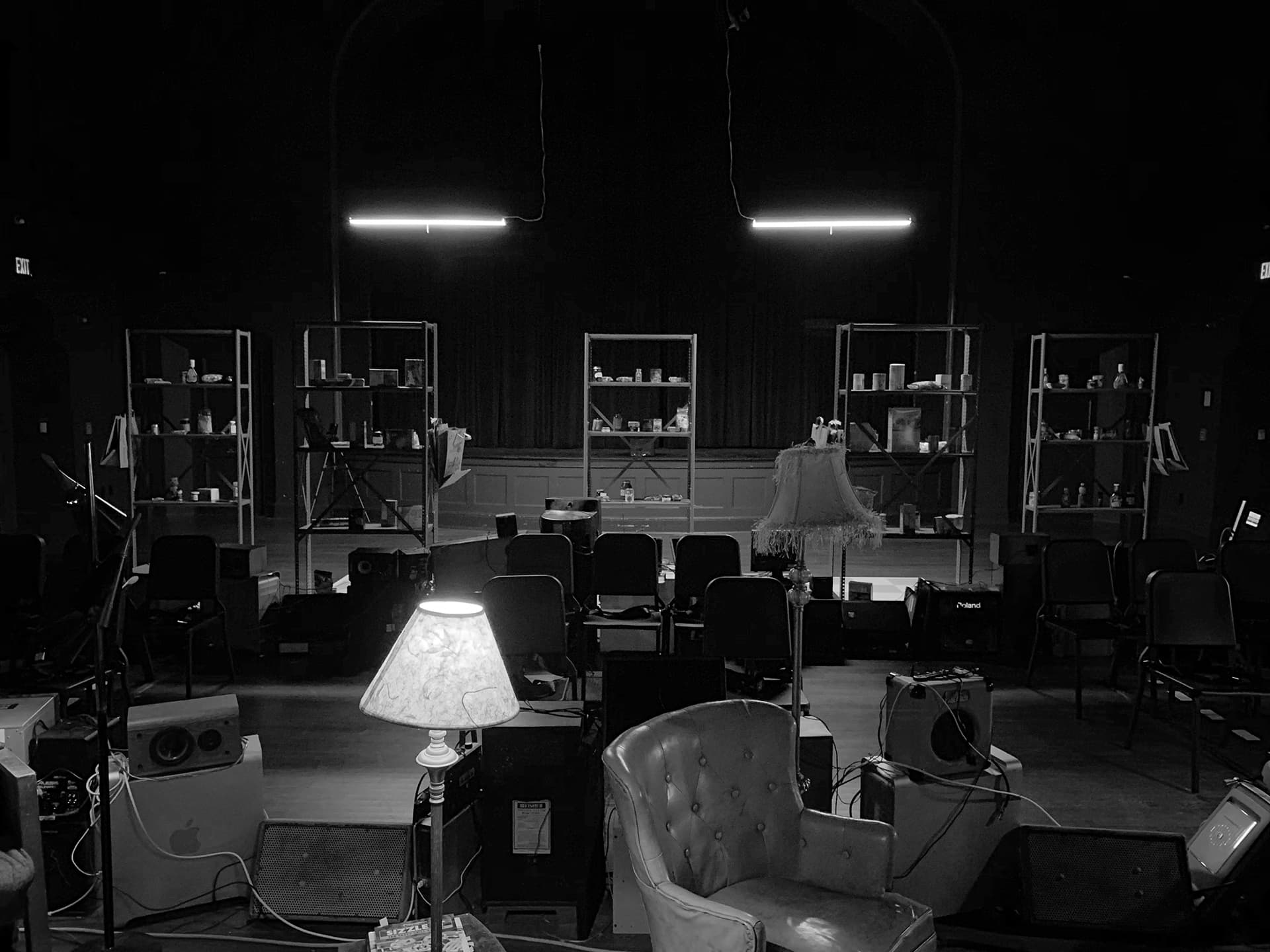
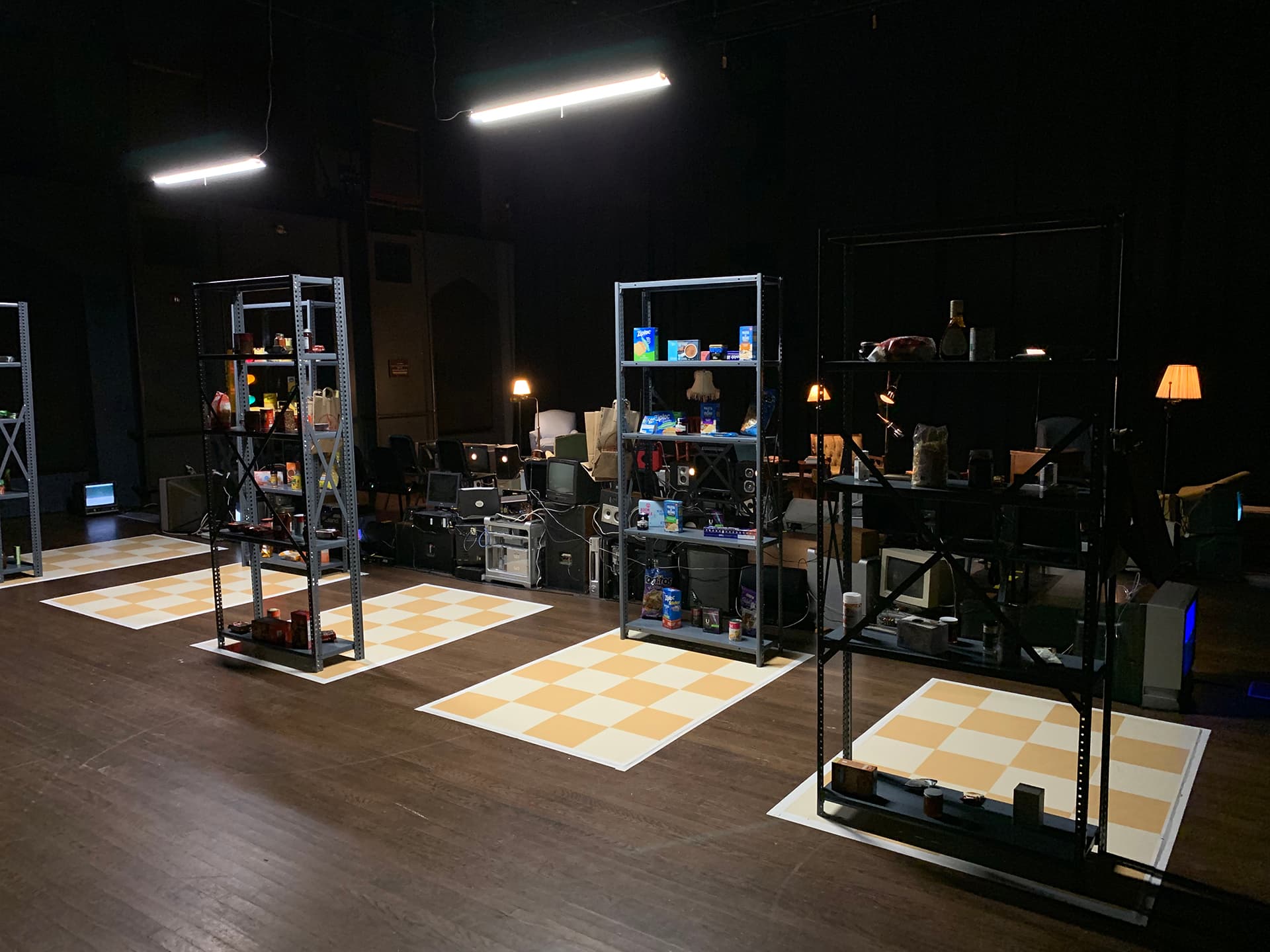
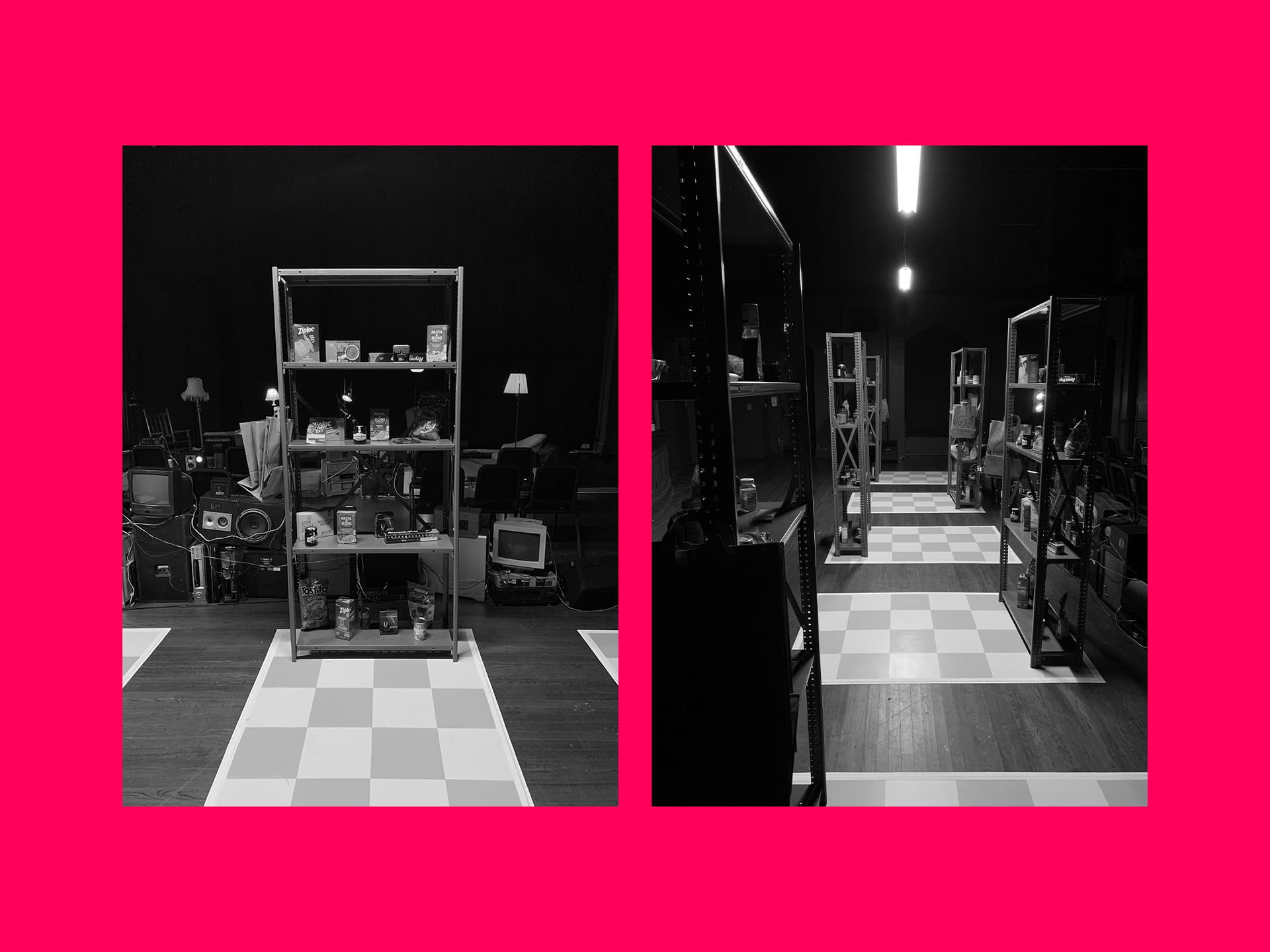
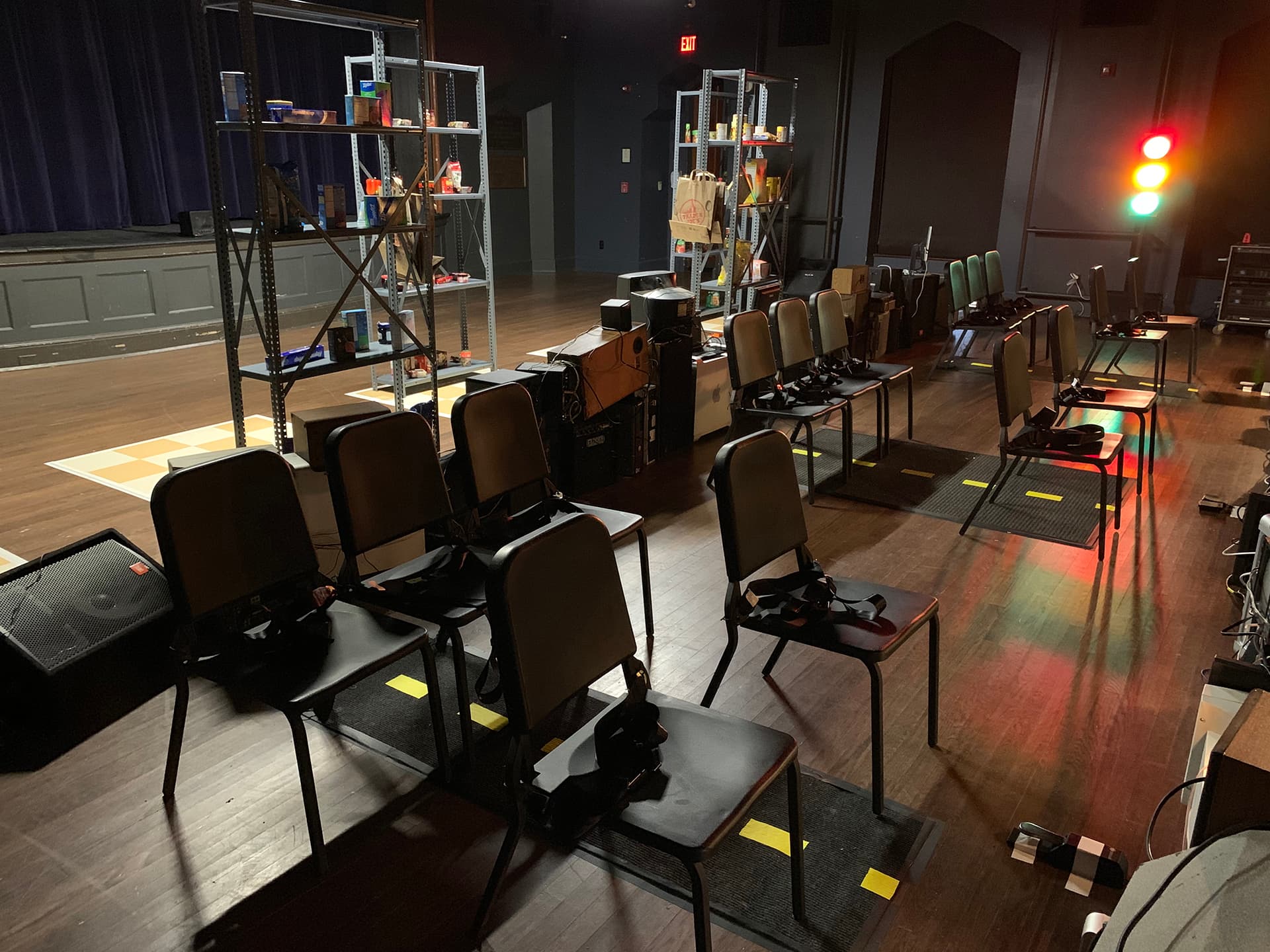
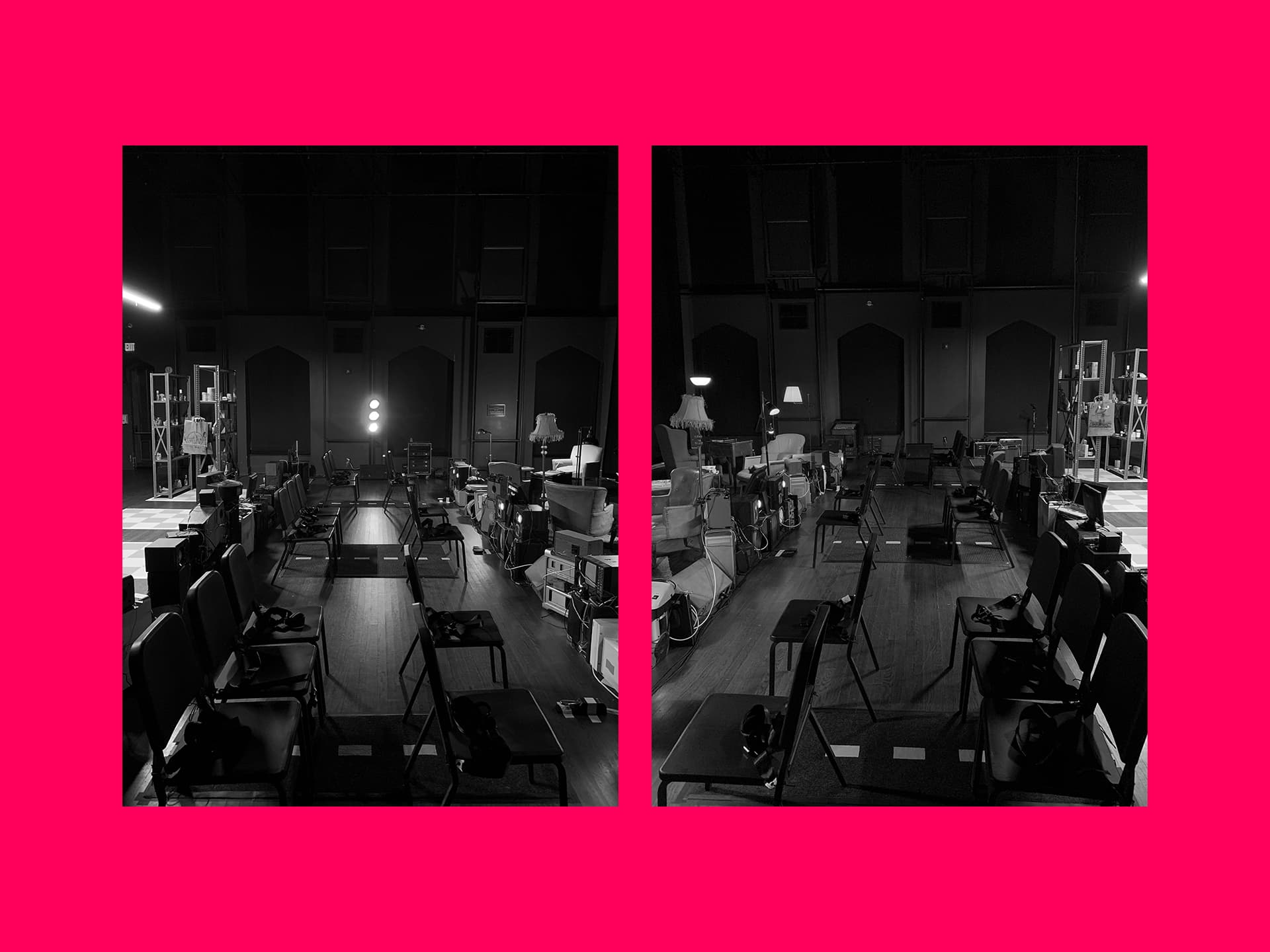
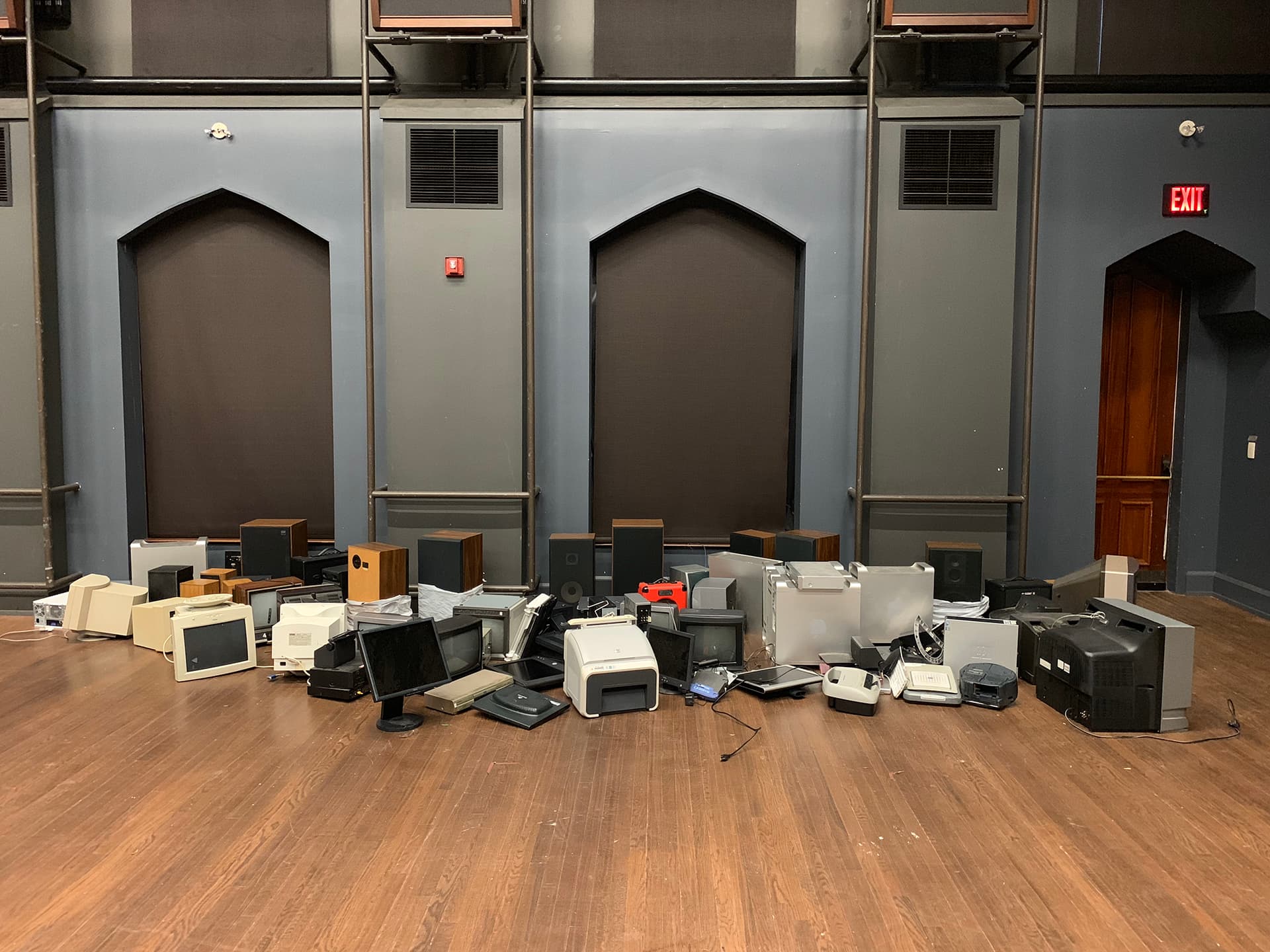
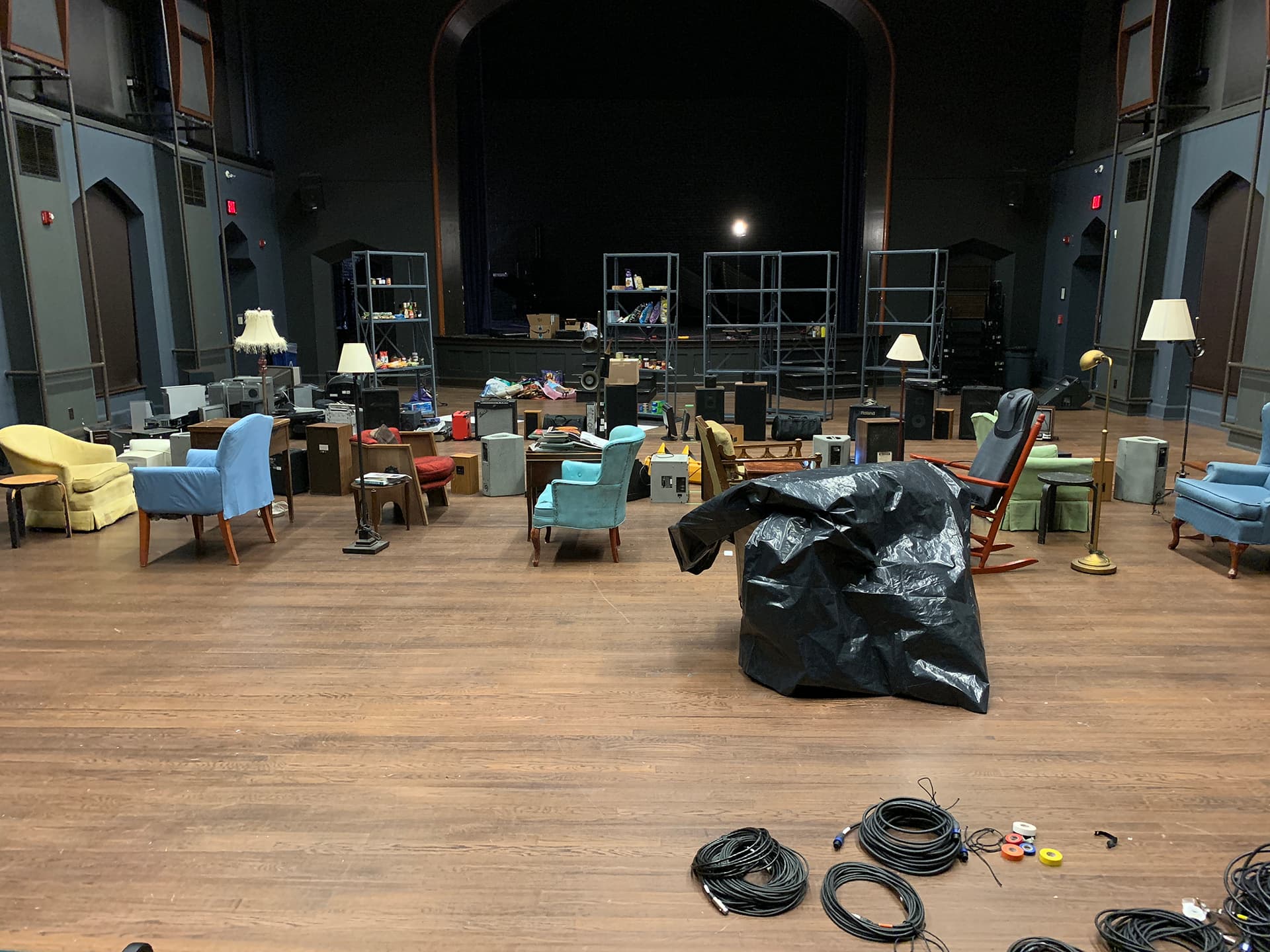
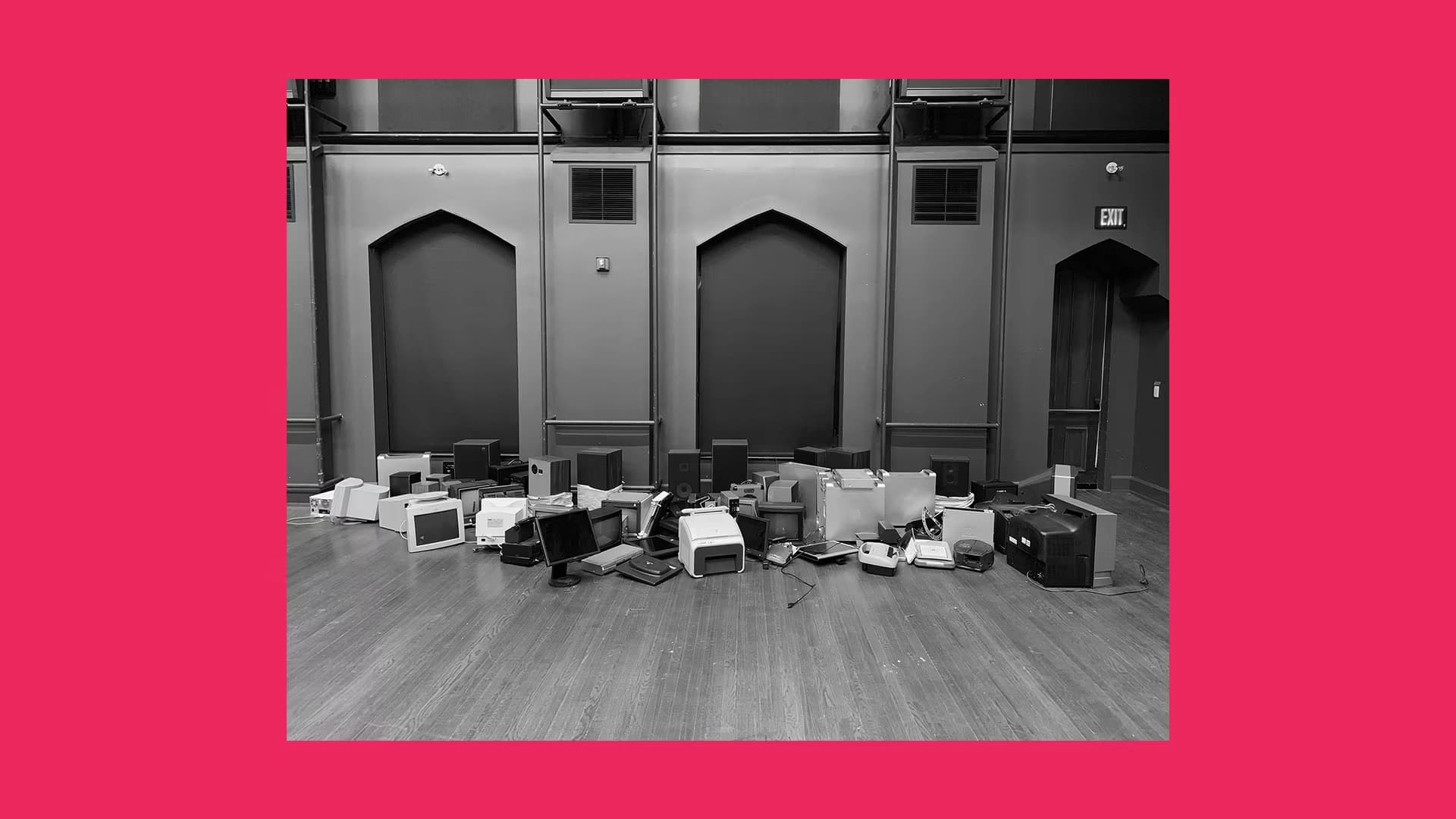
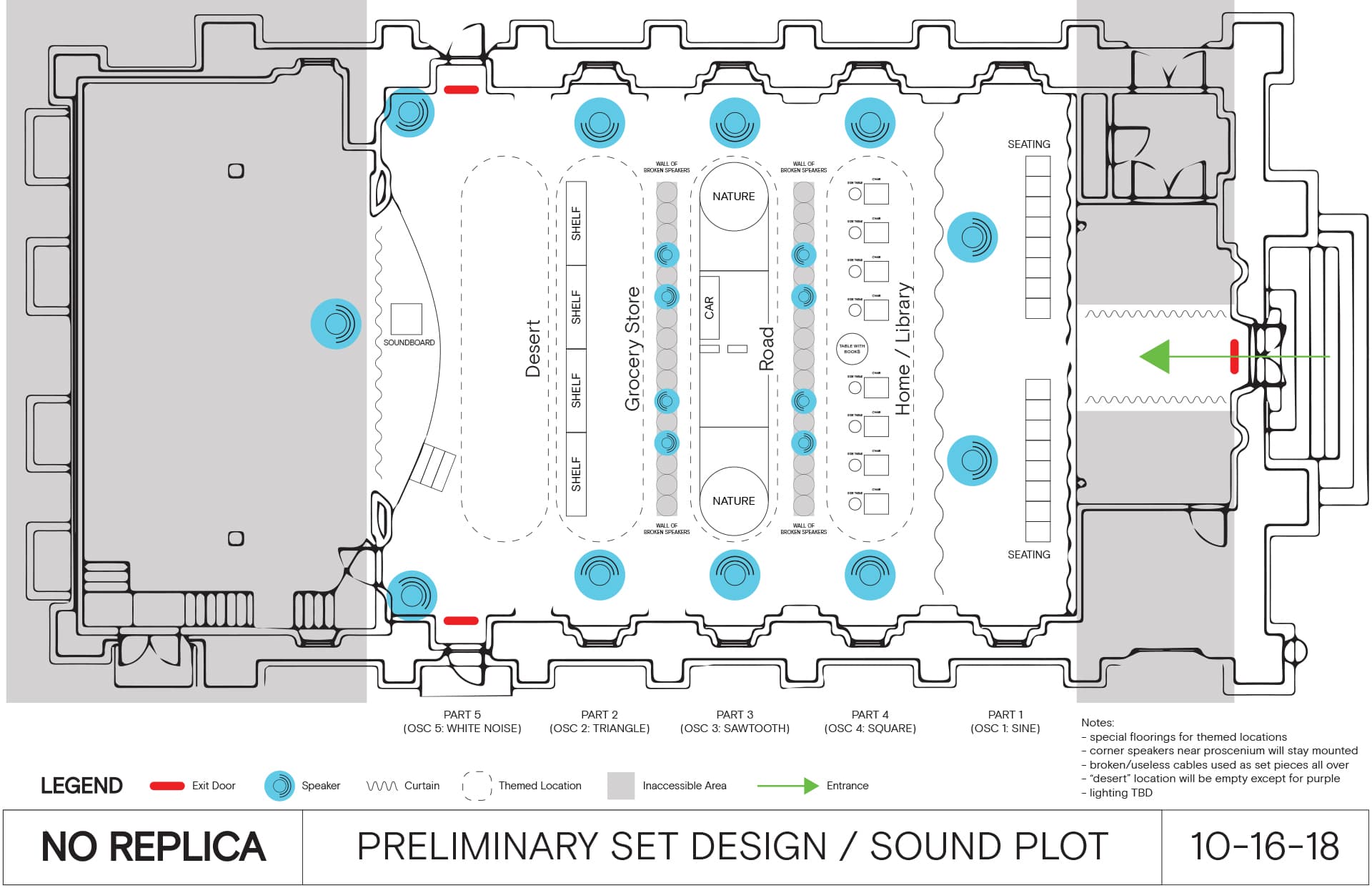
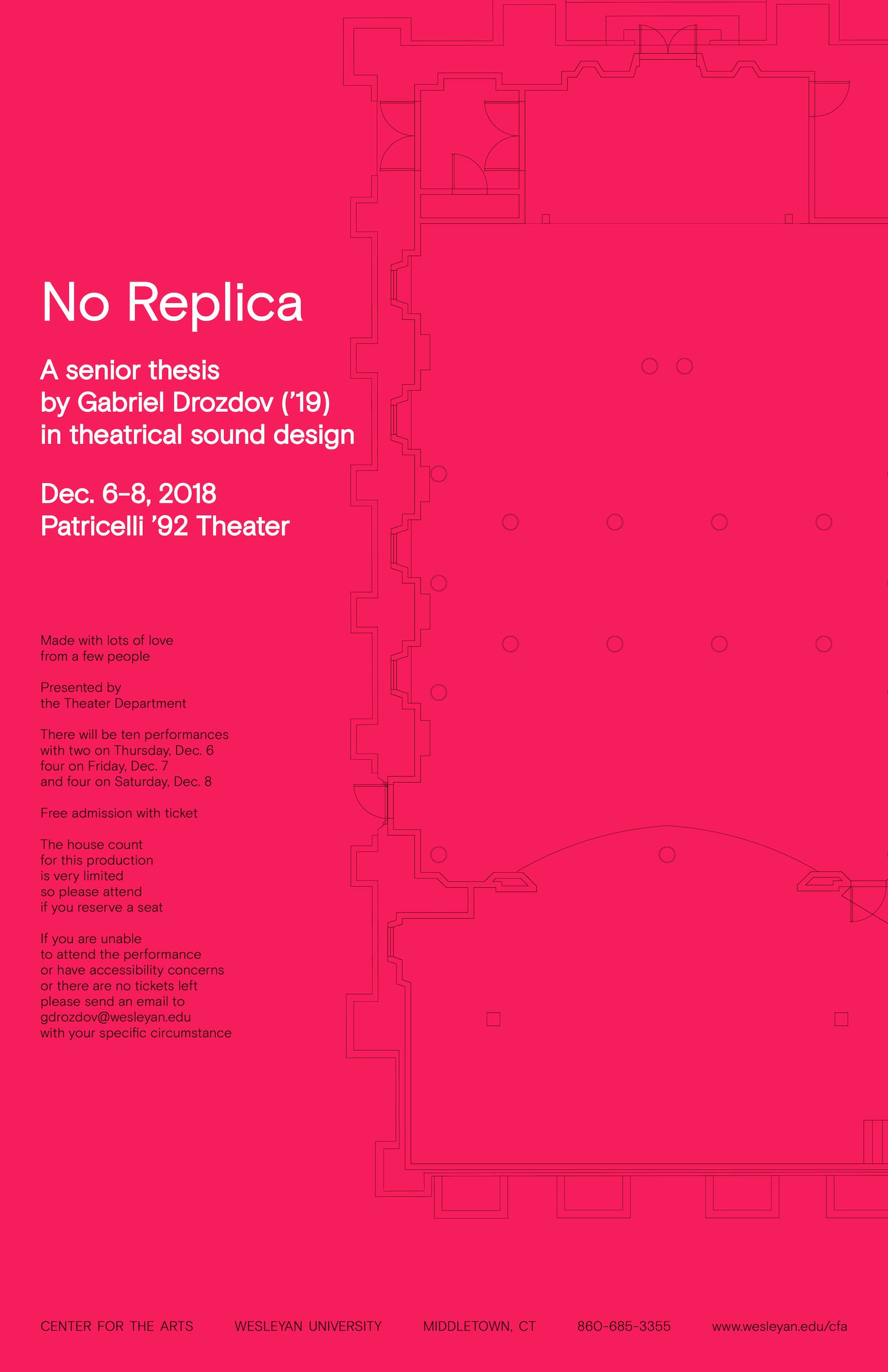
No Replica was my senior thesis at Wesleyan University, which consisted of a performance and a research paper. For the thesis’ performance component, I devised a piece that used nineteen speakers in lieu of actors to investigate the role of technology in a performance context. I dubbed this piece a “sound performance,” which materialized as an immersive experience guided by limited, ambiguous narrated instructions. A pre-recorded voice led a small audience through various activities and spaces under the false premise that the audience’s behavior affected what sounds or instructions would occur. Of the ten performances, no two were the same.
Director/Sound Designer: Gabriel Drozdov
Stage Manager: Drew Weiss
Scenic Designer: Ava Calabrese Grob
Properties Designer: Capri Gehred-O’Connell
Narrator: Maddie Ulevich
Stagehand: Nika Litt
Publicist: Ramsay Burgess
Production Manager: Rebecca Foster
Thesis Tutor: Calvin O’Malley Anderson
Technical Advisor: Tony Hernandez
Part 1: Sitting, Waiting
Each performance began with the audience entering a small area enclosed by curtains. Narrated audio from two speakers initiated the show by providing some basic, loose ground rules. The two microphones situated in the space served no purpose as their cables lay unplugged on the floor. This phase of the performance included prolonged moments of silence or repeated music meant to bore the audience and raise the awkward tension, potentially encouraging individuals to act without instruction, break the ground rules, and explore the theater beyond the curtain.
Part 2: Passing Through the Curtain
Most audiences refused to move without explicit instruction to do so. After some time, the speakers instructed everyone to pass through the curtains into the main space. This main area was composed of multiple sets littered with broken or malfunctioning technology, as well as numerous speakers scattered throughout. Much of this equipment was ostensibly plugged-in and active, but only a select nineteen speakers actually worked. I included tens of unused speakers, as well other devices such as illuminated soundboards, computer monitors, and TVs.
Part 3: Shopping for Groceries
In the larger theatrical space, the pre-recorded narrator began reading an ingredient list and encouraged the audience to interact with a grocery store-inspired set. Throughout this phase, the voice would give indications that the audience’s actions were being monitored (which wasn’t true). Some audiences laughed, some stayed silent, and some chaotically began dismantling the grocery shelves.
Part 4: Driving Home
The pre-recorded voice then encouraged the audience to mimic a driving experience as if the participants were taking their groceries home. Individuals selected their “car” and the aural atmosphere of a road immersed the theater. This soundscape frequently stopped, indicating that an individual was not performing properly and as such the performance theoretically could not continue (which wasn't true).
Part 5: Reading, Wandering
Finally, the instructions led the audience to a library-esque area, but the narration provided little direction at this point. Instead, I wanted to see how participants would interact with the space when given no additional direction. The results varied again from uneventful to chaotic—individuals sat and did nothing, talked into microphones for no one listening, or destroyed the food from the grocery store. In one performance, a group of people wrapped the grocery shelves entirely with tinfoil. In another, many people gathered on the stage, which was perhaps the only true off-limits zone (as I was sitting operating the show right behind a curtain). Finally, once someone chose to exit the theater, the performance would end. An usher would enter the space to blow an airhorn signifying to all that the show was over.












